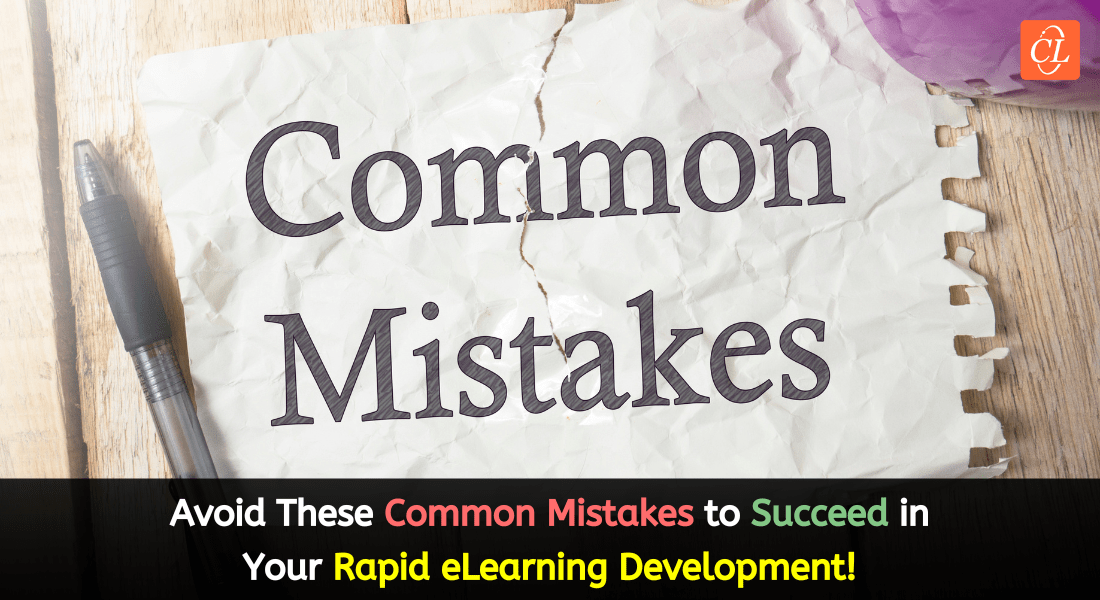5 Tech Hacks for Effective eLearning Project Management & Boost ROI

The corporate training landscape is undergoing a significant shift. Traditional instructor-led training, while still valuable, often struggles to keep pace with the dynamic needs of today's workforce. Enter eLearning – a flexible, scalable, and cost-effective solution that empowers employees to learn at their own pace and convenience.
However, creating impactful eLearning experiences requires meticulous planning and execution. This is where efficient eLearning project management comes into play. It ensures a smooth workflow, keeps stakeholders informed, and ultimately leads to a successful training program with a strong return on investment (ROI).
Efficient eLearning project management is essential for creating high-quality training programs on time and within budget.
Here's why it's important:
- Minimizes rework and delays, saving resources.
- Ensures consistent design, development, and delivery.
- Keeps everyone informed and aligned.
- Expedites the eLearning development process.
What is the Importance of eLearning Project Management?
Imagine this: you're tasked with developing an eLearning program on a tight deadline. Deadlines loom, subject matter experts (SMEs) are swamped, and instructional designers are drowning in revisions. Communication breakdowns lead to rework, delays, and ultimately, a subpar training program.
This scenario highlights the importance of eLearning project management. It streamlines the entire process, from initial concept to final deployment, by:
- Reducing Costs: Clearly defined workflows minimize rework and delays, saving valuable resources and avoiding last-minute scrambles.
- Improving Quality: Defined processes ensure consistency in design, development, and delivery, leading to high-quality eLearning that adheres to best practices.
- Enhancing Collaboration: Effective communication tools keep everyone – L&D professionals, SMEs, instructional designers, and reviewers – on the same page, fostering a collaborative environment.
- Faster Delivery: Streamlined project management helps expedite the eLearning development process, allowing for quicker deployment and employee training.
How Technology Supercharges Your eLearning Project Management?
The good news? Technology can be your secret weapon for mastering eLearning project management. Here are 5 key tools and strategies to leverage for success:
1. Project Management Software: Consider platforms like Asana, Trello, or Monday.com. These solutions offer a multitude of functionalities:
- Plan & Organize: Define project scope, create detailed timelines, assign tasks and responsibilities, and track progress visually with features like Kanban boards or Gantt charts.
- Collaboration & Communication: Facilitate seamless team communication using built-in discussion boards, document sharing capabilities, and real-time updates.
- Resource Management: Allocate resources effectively based on skillsets and workload capacity. Monitor team workload to avoid bottlenecks and ensure timely task completion.
- Reporting & Analytics: Track key eLearning project metrics such as completion rates, learner engagement, and revision history. Use these insights to measure ROI, identify areas for improvement, and optimize future projects.
2. Cloud-Based Storage & Collaboration Tools: Gone are the days of endless email attachments and version control nightmares. Cloud-based storage platforms like Google Drive or Dropbox offer a secure and centralized location to store all your eLearning assets – documents, images, audio, video, and more. With real-time co-editing functionalities and version control features, everyone in the team can work on the latest version simultaneously, minimizing confusion and ensuring a cohesive project.
→ Download Now: Aligning L&D with Business Leaders [FREE eBook]
3. Learning Management Systems (LMS) – More Than Just Content Delivery: Modern LMS platforms offer a plethora of project management functionalities beyond just content delivery. Here's how to leverage them:
- Manage User Access: Assign roles and permissions for team members, SMEs, and reviewers. This ensures secure access to specific modules and functionalities within the LMS based on their roles in the project.
- Content Review & Feedback: Utilize online review tools within the LMS to streamline the feedback and approval process for eLearning content. Team members can provide granular feedback directly on specific elements (text, images, audio) within the LMS, fostering efficient communication and iteration cycles.
- Deployment & Tracking: Schedule the rollout of eLearning modules within the LMS based on the project timeline. Furthermore, LMS platforms offer robust reporting tools to track learner progress, completion rates, and course engagement metrics. Utilize this data to refine your training programs and measure their effectiveness.

4. Embrace Microlearning Authoring Tools: Microlearning, the bite-sized approach to eLearning, is a game-changer for busy employees. These bite-sized modules are easily digestible and can be completed in short bursts.

Microlearning authoring tools like Articulate Rise 360 or Adobe Captivate Prime expedite the development process by offering user-friendly interfaces, pre-built templates, and drag-and-drop functionalities. This allows L&D professionals to create engaging microlearning content quickly and efficiently.
How to Pick the Right eLearning Authoring Tool? [Video]
5. Communication & Feedback Tools: Real-time communication and feedback are crucial for successful project management. Utilize instant messaging platforms like Slack or Microsoft Teams, or project management software with built-in chat features. These tools facilitate quick communication between team members, SMEs, and stakeholders, allowing for faster issue resolution and smoother project execution.
Beyond Technology: Building a Strong Foundation
While technology plays a critical role, effective eLearning project management requires more than just fancy tools. Here are some additional strategies to consider:
- Clearly Defined Goals & Objectives: Set clear and measurable learning objectives for your eLearning program. This ensures all efforts are aligned towards achieving the desired outcomes for both learners and the organization.
- Stakeholder Management: Identify all stakeholders involved in the project, from SMEs and decision-makers to the learners themselves. Maintain open communication channels and keep everyone informed of progress updates, potential roadblocks, and key milestones.
- A Defined eLearning Development Process: Establish a well-defined eLearning development process tailored to your organization's needs. This could include stages such as needs analysis, content development, instructional design, development, testing, and deployment.
- Quality Assurance: Integrate a robust quality assurance (QA) process throughout the eLearning development lifecycle. This ensures the training program meets quality standards, is free of errors, and delivers a positive learning experience.
Conclusion: The Recipe for Success
By combining the power of technology with a well-defined project management approach, L&D professionals can create a recipe for eLearning success. Leveraging technology streamlines processes, fosters collaboration, and empowers teams to deliver high-quality training programs on time and within budget.
The result?
- Increased Employee Engagement: Engaging eLearning experiences with well-designed interactivities and microlearning modules contribute to higher learner satisfaction and motivation. This translates to a more skilled and knowledgeable workforce.
- Improved Training ROI: Efficient project management reduces costs associated with rework and delays. Furthermore, well-designed eLearning programs can be easily scaled and updated, maximizing the return on investment in terms of employee training and development.
- A Culture of Continuous Learning: By demonstrating the effectiveness of eLearning, L&D professionals can foster a culture of continuous learning within the organization. Employees become empowered to take charge of their development through accessible and engaging online training resources.
In today's dynamic business environment, effective eLearning project management is no longer an option, but a necessity. By embracing technology and best practices, L&D professionals can ensure their eLearning initiatives deliver a positive impact on the organization, its employees, and the overall learning culture.
Ready to take your eLearning project management to the next level? Download our FREE eBook, "Aligning L&D with Business Leaders," and discover strategies to secure stakeholder buy-in and ensure your training programs deliver real business value.




![5 Stages of Project Management Process in eLearning Course Development [Infographic]](https://blog.commlabindia.com/hubfs/Imported_Blog_Media/elearning-design-development-project-management-process.png)
